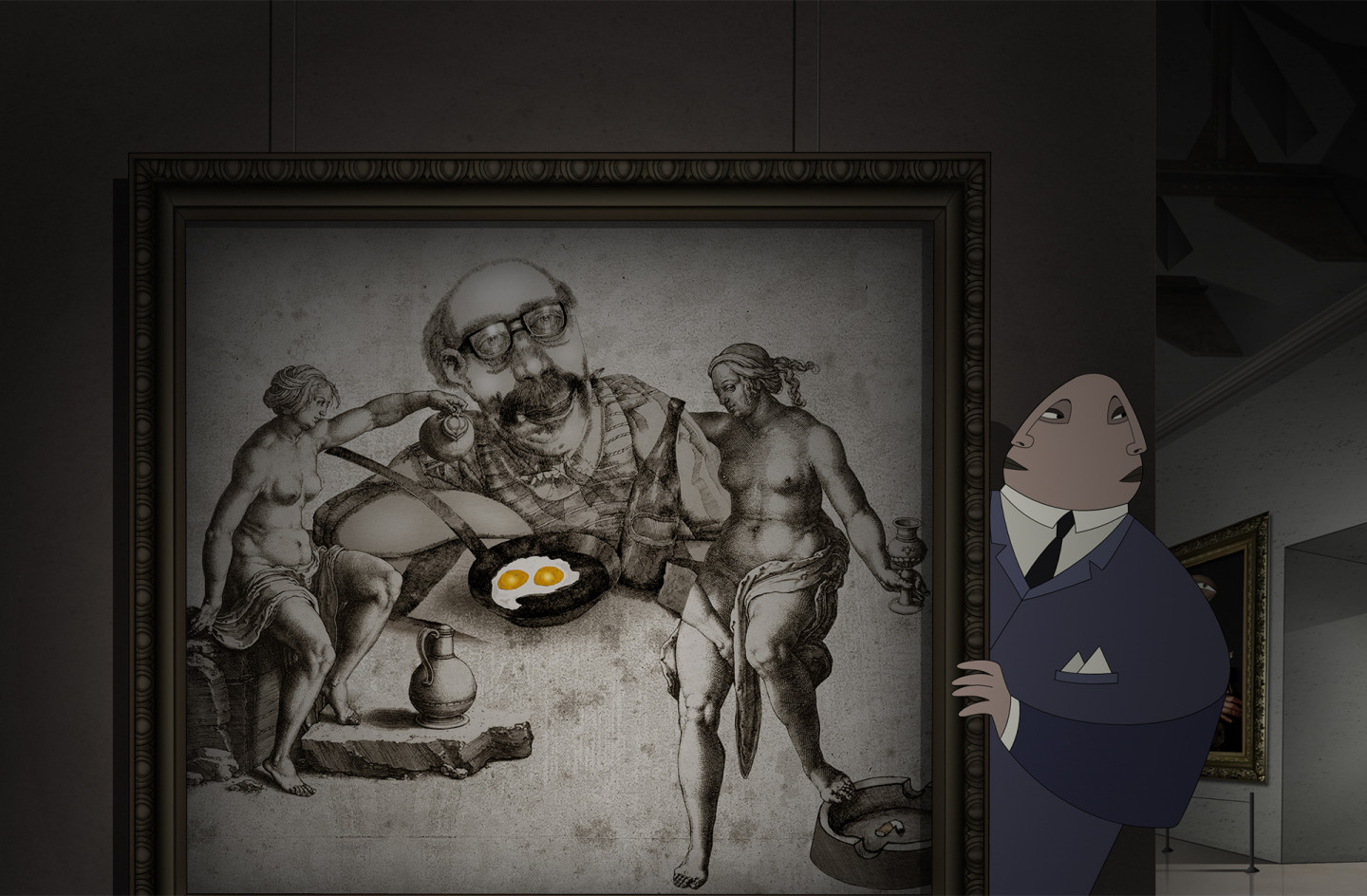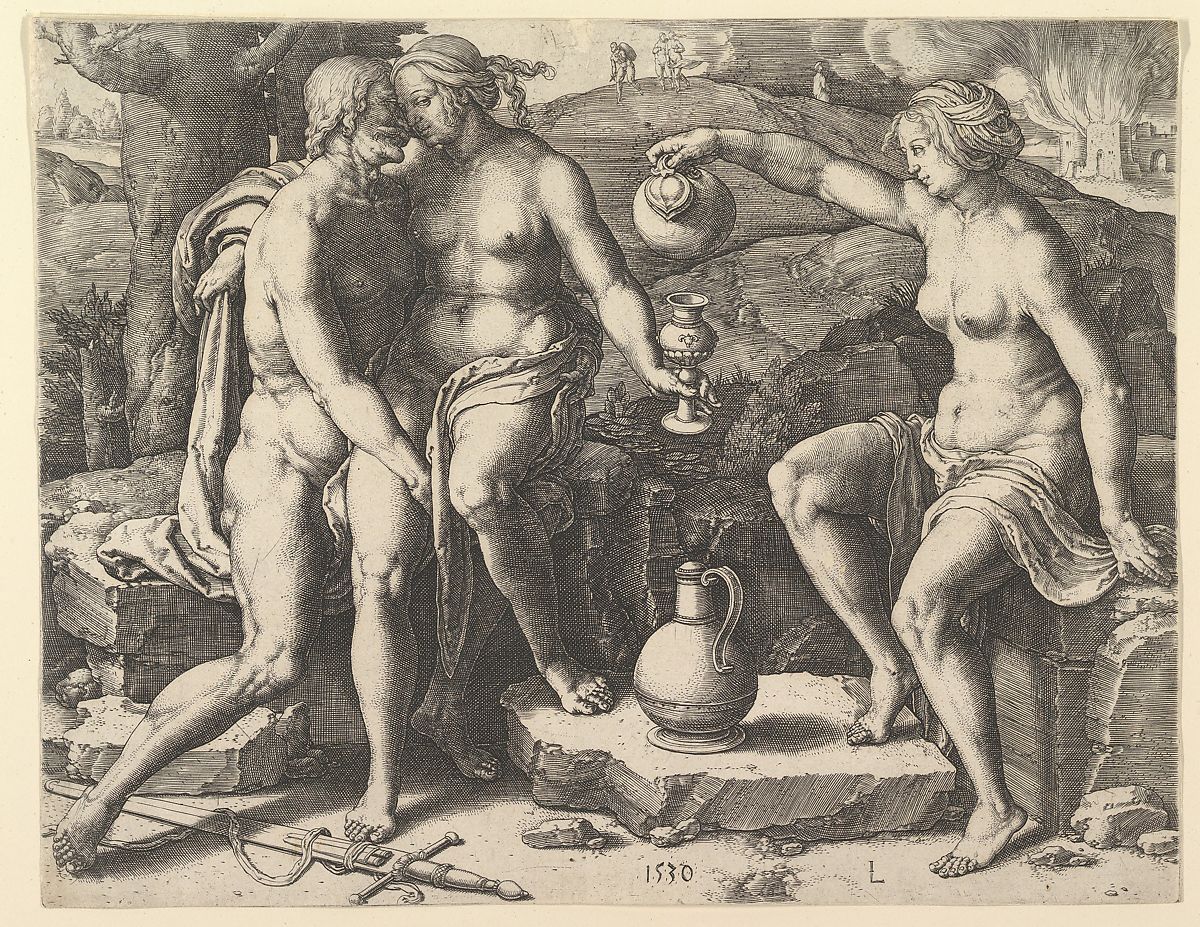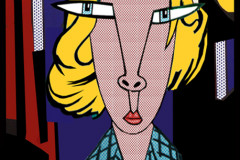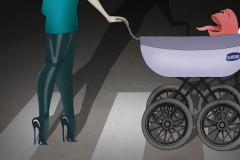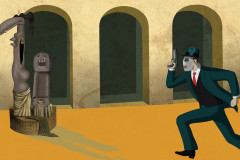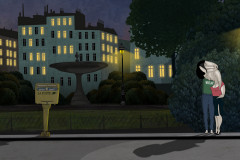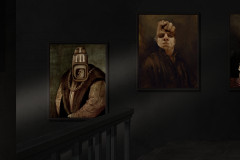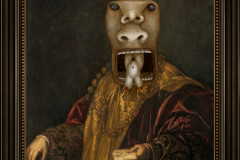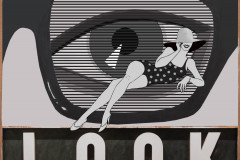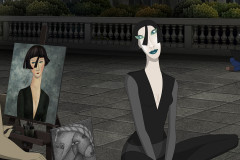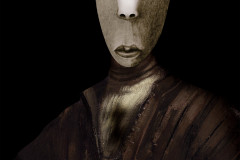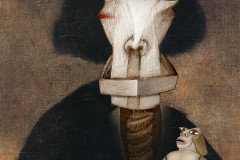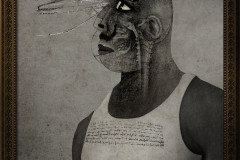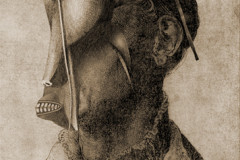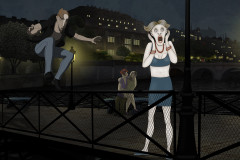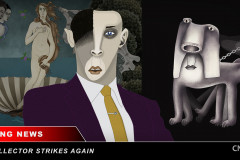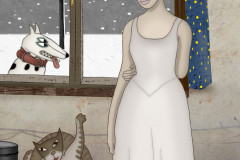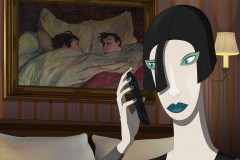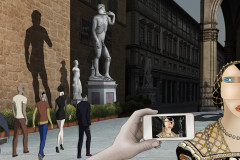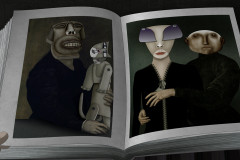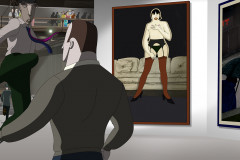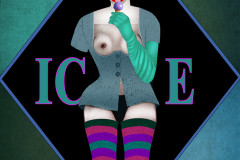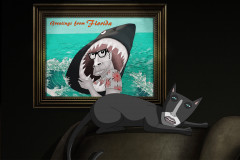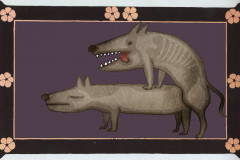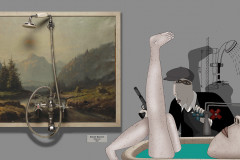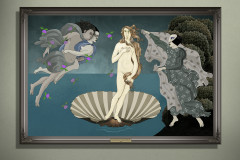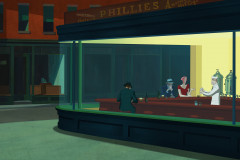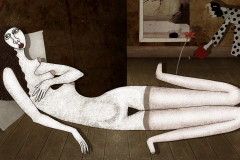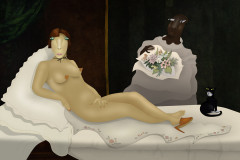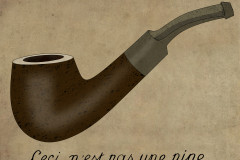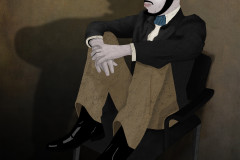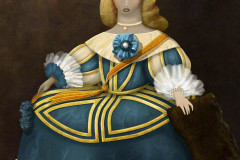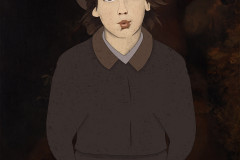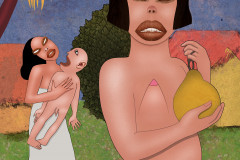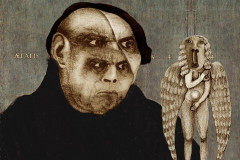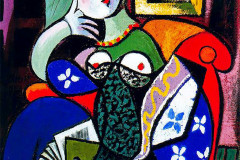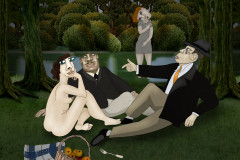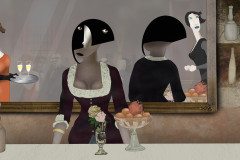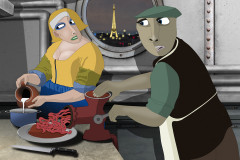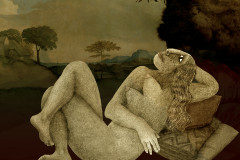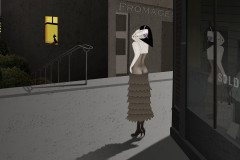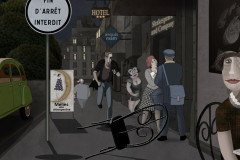Lucas Van Leyden (1494 k. - 1533): Lót és lányai, 1530 (rézmetszet, 18,9 x 24,4 cm) Metropolitan Museum of Art, New York. A németalföldi reneszánsz festő és grafikus korának legnevesebb rézmetszője volt, aki számos bibliai témájú művet alkotott. Lót és lányainak bűnös története az Ószövetségben olvasható. Nagy méretű festménnyé alakított „tükörtojásos verziója” a filmben a Musée d'Orsay falán látható, Membrano Bruno e kép mögül csusszan elő az Olympia elrablásakor, hogy aztán akcióba lendüljenek.
Lót és családja abban a „bűnös városban”, Szodomában lakott, amelynek neve ma is az erkölcsi fertő szinonímája. A Bibliában Isten haragja le is sújt a városra, amely így elpusztul, s angyali segítséggel csak Lót és két leánya menekülnek meg. Lucas van Leyden metszetén is látjuk a háttérben az égő várost, de figyelmünket sokkal inkább az előtér erotikus jelenete vonja magára. A bibliai történet szerint Lót lányai azt híve, hogy rajtuk kívül az egész emberiség elpusztult, apjukat lerészegítve egymás után háltak vele, hogy megmentsék az emberi fajt a kihalástól, s a nászokból született is egy-egy fiú. A reneszánsz és barokk művészek a történetben a szexualitás nyílt ábrázolásának lehetőségét látták. Bár a bor a téma minden ábrázolásán – mint ezen a metszeten is - központi helyet foglal el, még sincs sok jele annak, hogy Lót ne lenne „beszámítható állapotban”, nagyon is aktív csábító benyomását kelti...
Lucas van Leyden (c. 1494–1533): Lot and His Daughters, 1530 (engraving, 18.9 x 24.4 cm, Metropolitan Museum of Art, New York). The most prominent engraver of the Netherlandish Renaissance, Lucas van Leyden created numerous works on biblical themes. The sinful tale of Lot and his daughters, taken from the Old Testament, is one of them. In Ruben Brandt, Collector, a large-scale, altered “fried egg version” of the work appears on the wall of the Musée d'Orsay—Membrano Bruno emerges from behind it during the Olympia heist, ready to jump into action.
Lot and his family lived in the “sinful city” of Sodom, a place whose name still serves as a synonym for moral depravity. In the biblical account, God’s wrath destroys the city, and only Lot and his two daughters escape with angelic assistance. In Lucas van Leyden’s engraving, the burning city can be seen in the background, but the viewer’s attention is inevitably drawn to the erotic scene in the foreground. According to the story, Lot’s daughters, believing that humanity had been wiped out, intoxicated their father and slept with him on consecutive nights to preserve the human race. Each union resulted in the birth of a son.
For Renaissance and Baroque artists, this story offered an opportunity to depict sexuality openly under the cover of biblical narrative. Although wine is a central motif in every artistic rendering of the event—including in this print—there’s little evidence that Lot is truly incapacitated. On the contrary, he appears quite aware, even seductive—challenging the notion of innocence or divine justification, and offering instead a complex and morally ambiguous interpretation that was not uncommon in early modern visual storytelling.






